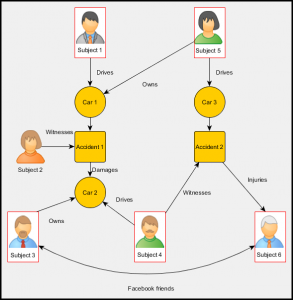— June 7, 2019
There’s one cliché that perfectly sums up the way people feel about display advertising from a web user perspective — you’re more likely to have a heart attack when browsing the internet than click on a digital ad (even accidentally).
The numbers back up the cliché. According to a study from Wordstream, the average clickthrough rate for display ads is just 0.46%. And yet, U.S. advertisers will spend $ 59.45 billion on programmatic digital display advertising in 2019. That’s a recipe for a lot of wasted marketing resources.
One of the main reasons so many display ads fall flat is improper targeting. Digital display ads aren’t meant to reach a mass market. Setting your target filters too broadly will inevitably lead to low clickthrough and conversion rates.
Don’t write off digital display advertising as a low-performing marketing tactic. By using intent data effectively, you can maximize ad performance and drive business results. There are three specific ways that intent data can increase ad performance and keep you from wasting marketing resources.
1. Choosing the Right Topics
If you sell a martech product, is it enough to set “marketing” as your main topic for a programmatic ad campaign? Probably not. Your ads will end up displayed across far too many irrelevant websites that lead to either no clicks or too many low-converting web visits.
Regardless of the programmatic ad platform you’re using, you have an abundance of filters to help ensure you’re only targeting the highest-value accounts. But without the right data available internally, you can’t make intelligent decisions about settings that could help you improve your targeting.
Investing in third-party intent data helps you gain insight into the topics and websites that your ideal customers are interested in. First and foremost, those insights will guide your ad copy to ensure your messaging is as relevant as possible. But it’s not just about creating ads that cover the right topics—it’s about creating a specific placement list that ensures your ads are displayed on websites that deliver the highest possible conversion rates.
Many people have been trained to ignore display ads because they are notoriously irrelevant or spammy. Using intent data to improve your topic choices gives you an opportunity to change that display advertising narrative.
2. Improving the Context of Display Ads
One of the most valuable benefits of using intent data (regardless of use case) is its ability to add context to your marketing efforts. Knowing who to target and what they’re interested in isn’t enough—timing is everything. When you’re able to run display ads in the right context for target accounts (meaning at a time when they’re looking to buy), you can maximize clickthrough and conversion rates.
Traditionally, you had to rely solely on keywords and keyword phrases to convey intent to programmatic ad platforms. You’d hope that your keywords would guide automated ads to the right placements to generate the most awareness and action possible. But all too often, optimizing these keyword selections came down to instinct and gut feelings. Maximizing performance means making data-driven decisions about where your ads will be placed and when.
Not only does third-party intent data tell you what target accounts are searching for and the keywords they’re most interested in, but it also shows you which stage of the buyer’s journey they’re at so you can run ads more effectively.
3. Targeting the Right Accounts
You don’t just want to maximize clickthrough rates. You want to attract in-market companies to your website in the most efficient way possible. The more effectively you can target in-market companies, the easier it will be to generate ROI for your digital display ad spend.
Even if you already have a list of target accounts in mind, intent data can help uncover additional lookalike accounts that help create a deeper, more practical total addressable market.
From there, you can use intent data to optimize ad copy, landing pages, and demographic filters and ensure that every campaign is generating awareness from the ideal targets.
Investing in Intent Targeted Advertising
The three benefits listed here are core tenants of an intent targeted advertising strategy. By linking intent data to programmatic display advertising, you’ll be able to fight against the display ad clichés and maximize results for your business.
With the right approach, you could outperform paid search results and deliver a cost per web visit up to 4x cheaper than with traditional display advertising. But you need the right platform to help.
Do you know which specific companies are currently in-market to buy your product? Wouldn’t it be easier to sell to them if you already knew who they were, what they thought of you, and what they thought of your competitors? Good news – It is now possible to know this, with up to 91% accuracy. Check out Aberdeen’s comprehensive report Demystifying B2B Purchase Intent Data to learn more.
Digital & Social Articles on Business 2 Community
(20)
Report Post


